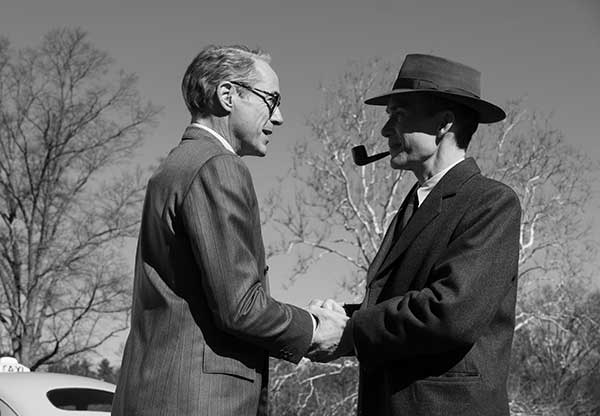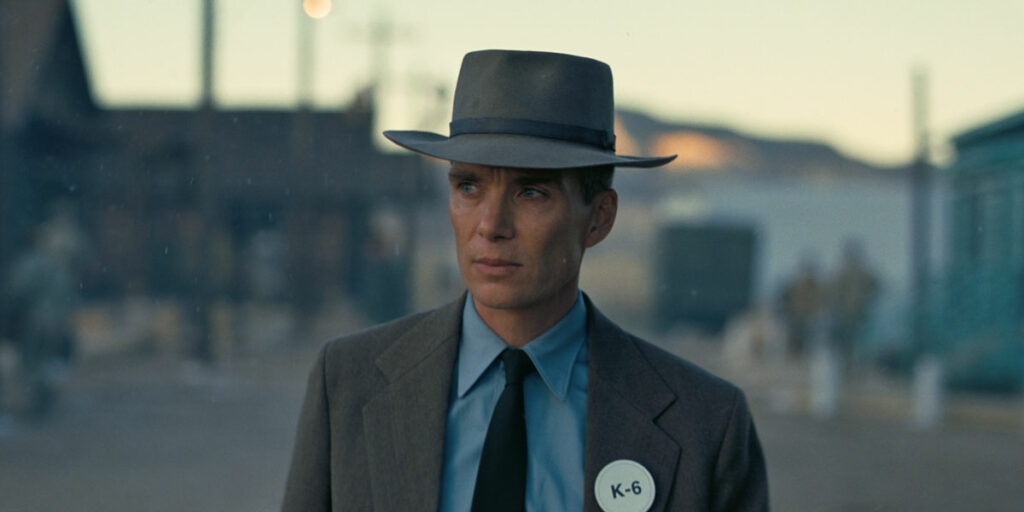With his brilliant and powerful film Oppenheimer, Christopher Nolan once again establishes himself as a visionary director.
It is safe to say that Oppenheimer, directed, written, and produced by Christopher Nolan, is one of the most anticipated films of the year. By now, virtually everybody has heard of the film, whether it is because it is Nolan’s latest work, or because of the Barbenheimer phenomenon, an internet trend that is putting together Nolan’s Oppenheimer and Greta Gerwig’s Barbie, as the two are opening against each other in most countries on July 21. Whatever the reason, the movie had the difficult task of living up to the very high expectations that have now arisen around it.
A biographical thriller, Oppenheimer follows its titular character, the theoretical physicist J. Robert Oppenheimer (Cillian Murphy), known to the world as the father of the atomic bomb, through various years of his life. The movie is a historical biopic that reflects on the man that changed the course of the war, and of the world, forever. Focused on his personal life as well as his historic persona, Oppenheimer portrays Robert’s relationship with his family members, his wife Katherine Oppenheimer (Emily Blunt), and his affair with Jean Tatlock (Florence Pugh). The film also depicts his professional relationships with those involved in the development of nuclear weapons, such as Leslie Groves (Matt Damon), Lewis Strauss (Robert Downey Jr.), Niels Bohr (Kenneth Branagh), and Albert Einstein (Tom Conti).
In a vast universe of recent films around topical figures in the scientific world, Oppenheimer stands out because of its non-linear narration. Most of the film is told through flashbacks as the audience follows the story through two separate timelines: Oppenheimer’s security hearing in 1954, and Strauss’ Senate hearing in 1958. Interestingly, the two timelines are very clearly separated, named by their respective intertitles: fission and fusion. The first is narrated in colours while the second one is told exclusively in black and white footage, choosing an aesthetic that recalls documentary filmmaking, or even journalism. This suggests an even further distinction between the two, with the seemingly objective journalistic version of the events in one, and Oppenheimer’s own recollections of the story in colours on the other.

This also allows the film to span multiple years, from Oppenheimer’s start in academia through the McCarthy era, thus depicting the main character as more than the person behind the atomic bomb. I really appreciated that Nolan chose to portray Oppenheimer as the man that brought quantum physics to America, and for his efforts towards an international control of nuclear power rather than focusing solely on his role in the Manhattan Project. Although the titular character is obviously the focus on Oppenheimer, I would have liked to see the other physicists explored more, as they too were involved in researching the nuclear bomb. Similarly, I felt like the very few female characters in the film lacked screen time and depth, given their importance in Oppenheimer’s life.
As the film often reminds us, nothing comes from theory alone, and this is true for the script of Oppenheimer too, as the movie relies more on its visual impact than on quantum physics to convey its plot. Instead of having a classic long monologue delivered to the audience by the main character, most of the physics and theory-based discussions in Oppenheimer are accompanied by a visual aid, featuring the on-screen representation of sound waves and the nucleus as the characters talk about these concepts. Much of the talk around physics is not necessarily featured in the film, nor is it meant to be fully understood by the audience, but the key information is on the screen for us to see.
In terms of visuals, little to no violence is actually shown in Oppenheimer. While the audience does witness the explosion of the test atomic bomb in Los Alamos in a terrifying yet stunning sequence, the film does not show anything about tthe atomic bombings of Hiroshima and Nagasaki. Instead, much like Oppenheimer himself, we are kept in the dark and only hear the radio announcement from President Truman. Similarly, the audience sees Oppenheimer’s reaction to the photos of the aftermath in Japan but the actual photos are never shown in the film.
Visually, Oppenheimer also creates a recurring pattern throughout the film. From its opening sequence, the film establishes a very clear connection between Oppenheimer and explosions by constantly juxtaposing the main character with shots of fire. This is also reinforced by the score by Ludwig Göransson and the sound design by Randy Torres, both of which create a sense of urgency and impending doom. As we inevitably get closer to the explosion, the thumping sound and the presence of fire become more and more frequent. This seems to suggest that this has always been the inescapable fate the world would eventually face as Oppenheimer inevitably gets closer to the creation of the atomic bomb with every step in his career.
Cillian Murphy‘s portrayal of Oppenheimer is captivating, as he manages to depict the many different stages of this character’s life as he comes to terms with the reality of what he created. Robert Downey Jr. also shines as Lewis Strauss, in what might even be his best performance yet, stealing the scene in the last act of the movie.
Oppenheimer is a stunning masterpiece that keeps its audience engaged for the entirety of its seemingly daunting runtime, despite its heavy subject matter. It is a devastatingly beautiful piece of cinema that serves as a necessary and timely reminder of the horror of the atomic bomb and anxiety around this type of weapon, including the hydrogen bomb, which is much discussed in the film. In fact, the movie highlights the tragedy that a nuclear war signifies, something that would destroy the world, as Oppenheimer himself points out. With its striking visuals and powerful score, Nolan creates a film that is haunting and eerie in its uncomfortable beauty.
Oppenheimer is now available to watch on digital and on demand. Here’s why Oppenheimer is Nolan’s Fictional Fractured Man No More!

